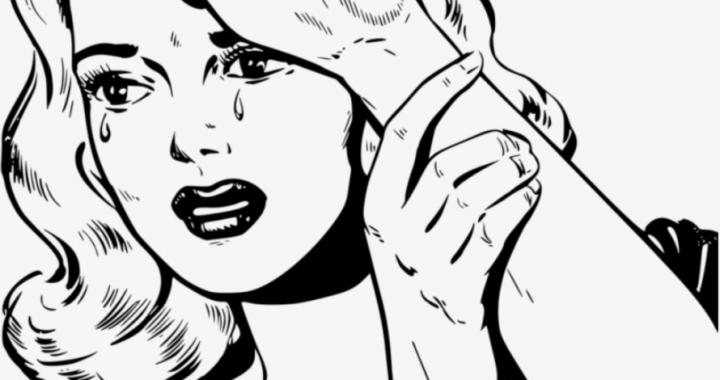Let’s assume I’m this world-renowned author, with aspiring writers from around the world flocking to me for advice. I have this wild, white beard from years of paying attention to other people, a colorful yet tasteful garb over my head to prevent ideas from spilling out, and a voice as clear as ice water. A gong is rung, class begins. We are in an auditorium, incense smoke and curiosity filling the air. For a while, it is a mess, folks speaking over one another, writing notes, sticking gum to the bottom of desks. But now it is your turn. You raise your hand. And the class goes quiet.
“How do you write characters?”
The stillness is unbearable. No answer yet. Only patience.
Cut back to reality, real quick. If you landed here then you are probably wondering the question, right? But before I could answer I had to create two characters before your very eyes. Wise ole me and curious you! Pure fiction <wink, wink>. Sometimes watching the answer is as powerful as hearing it. Oh, but what about watching it and then hearing it? Well, that’s what we’re going. Let’s continue.
Characterization: three forms (low-context, middle-context, high-context)
The first rather crude form of characterization, or character-creation, involves Description. I’m calling this low-context because it requires the least amount of effort on the part of the reader and the most on the part of the author by way of imagination. Basically, you tell it like it is, and how that is is up to you.
To borrow a metaphor, consider sculpture: a character arises from either adding diverse material together (1), subtracting it from a block (2), or both (3).
Example One. Tony was a middle aged man prone to daydreaming about his former glory as a record producer, his nose powdered in cheap cocaine.
Example Two. Out of everybody in the music industry, not a groupie, not a fan-girl, not an artist, nor manager resistant to change, was ever as innocent as Josephine.
Example Three. Robespierre knew he had had success as a musician, knew he didn’t have many years ahead of him, and knew that if he were going to leave a legacy he had better end his career recording the greatest album of all time, or else encourage someone younger than him do it instead.
Cool, right? Nothing to it. Yet there is a second approach to character-creation, one which could even work in conjunction with a direct description: Action. This form of characterization I’m calling middle-context, because it makes the playing field between reader and author a place of shared imagination. Consider the following examples, each the result of the subject interacting with either a person (4), a place (5), or a thing (6).
Example Four. Silvia saw Robert enter the room and melted.
Example Five. Julio ambled for 60 minutes, from strange street to strange street, for the perfect cafe where he could knock back an espresso, smoke two cigarettes, and stare back at the locals that would certainly stare at him.
Example Six. Borges couldn’t help but notice that the coin his friend had used to pay was the very one he had written about: the same value, the same series, the same gold glint when held in the light by the same waiter saying the same thing about it that had crossed the writer’s mind, only on paper, two weeks prior.
It takes but a second to feel Borges’s spiral of obsession as he encounters the coincidence about the coin (pun intended). Or, ask yourself, do we need a direct description stating that Julio is a tourist, and looks out of place? Lastly, though we are missing her age and appearance, we learn a lot about Silvia’s personality and her mentality by watching her melt. Remember, a line or two of Action can do the heavy lifting of characterization, which otherwise might have taken much more effort as direct description.
Allow me now to posit the third form of character-creation, one which the previous Borges example hinted at. That is letting the reader do all the work of characterization, by Association. High-context needed here.
For example, in reading a line of poetry, a sensitive reader may come across an apple. Without any wasted words, or even actions, the apple recall in the reader images of teachers, of health, of gardens and of snakes. It’s a loaded image, and I’m sure you can think of yet other associations. With them fresh in your mind, try reading this following sentence, and tell me you don’t feel anything.
She ate the apple.
Did you hear a crunch, did it drip? Was the apple red, yellow, green, bruised, full of worms? And who was “she”? Your sister? Snow White? A doctor? Multiple interpretations, rooted in the ambiguity, serves multiple readings of the sentence, more than it takes any single reading. (One worry of many authors is that our characters and their actions are boring.) Witness the power of Association. Any good reader, the kind you want, will be equipped with an arsenal of cultural references and intertextual knowledge.
Below, you’ll find some more obvious examples of characterization by association, sentences paired with descriptive or active language, to drive the point home.
Homer burped. Then Marge nagged him for it.
Uma Thurman sharpened her katana. She had one thing on her mind.
Mrs Karenina shook her head at the oncoming train. She wouldn’t jump just yet.
From the clouds, Zeus saw his next victim, a quiet young girl named Ana Steele. He decided to study her desires, so as to transform into the thing she most wanted.
For a stronger association, an author may allude to the source of the association, or, better yet, get as much mileage from the sample as possible by combining the association with description or action. If it’s complexity or sheer absurdity that you want, consider mixing texts. Like the last example, which combined mythology with pop culture (50 Shades). When played like this, combining or mixing, the reader doesn’t need to even catch all the associations you write to make your text worth while. The good reader knows this going in to a new book, knows there floats 90% of an iceberg underneath your characters, your words. This is high-context.
Drop the proper names and you have endless possibilities to create new characters based on old forms.
The husband burped. And the wife nagged him for it.
Silvia sharped her katana. She had one thing on her mind. Get revenge on Robert.
Mrs Patterson saw the oncoming train, remembered the Russian novel she had read. She wouldn’t jump at all.
From his office, Mr Grey saw the woman who would be interviewing him today, and decided something devious and secretive to himself. It would affect the course of the rest of their lives, and pop culture as we know it.
PS
It isn’t necessary to have a precise count of parsley leaves in a soup or an exact count of sugar to the grain in a cup. So too, the aspiring author needn’t take my half wise, un-old advice to the T. It serves the creative mind much more to hold true to a few general principles, discard what doesn’t work, remember what does, and venture out into unexplored territories of the imagination. Moreover, don’t descriptions rely on associations, and action too?
Not to mention, I kind of made this system up as I wrote the post. I didn’t necessarily stumble upon these divisions of characterization one bright day. Rather, I just thought about what I already do, gave it terms, and shared it with you. Describe a character, make a character do something, or draw on association: and you’ve created someone interesting to read.
All things considered, don’t you do the same? It’s wild and everywhere. Especially, and I mentioned this earlier, you can even make the reader a character, or yourself one too. Just engage, create, imagine. Next question, please.




